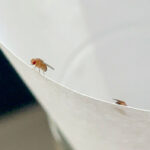Like many, you might have observed chickens moving around on the ground, perhaps even in your backyard or at a farm, and wondered why they don’t soar through the sky like other birds. It’s a common perception that chickens are flightless birds, almost earthbound. But is this really the case? The truth is more nuanced and rooted in both their evolutionary history and human intervention.
Chickens, surprisingly, are not entirely incapable of flight. They can fly, just not in the way we typically imagine birds flying. They won’t be seen circling high in the sky or migrating across continents. Their flight is more accurately described as short bursts, usually low to the ground and for limited distances. To understand why chickens have this limited flight capability, we need to delve into their origins and how domestication has shaped them.
Domesticated chickens are descendants of wild junglefowl, primarily the red junglefowl, and to a lesser extent, the gray junglefowl. These junglefowl species, which still exist today, are better fliers than their domesticated counterparts, but even they are more adapted to ground living. Junglefowl possess smaller wings relative to their body size, beaks designed for pecking at the ground, and feet that are not primarily for perching high in trees. Chickens inherited this basic physical structure from their junglefowl ancestors. Over thousands of years of evolution in the wild, junglefowl developed traits suited for survival in their specific environments, and extensive long-distance flight was not a primary necessity.
The key factor that significantly altered the chicken’s flight ability is human domestication and selective breeding. Humans began domesticating chickens thousands of years ago, not for their flying prowess, but for other traits that were beneficial to humans, primarily meat and egg production. This selective breeding process drastically changed the evolutionary trajectory of chickens. Instead of natural selection favoring traits that enhanced survival in the wild, humans artificially selected for traits like increased muscle mass, faster growth rates, and higher egg yields.
One of the most significant consequences of this selective breeding is the disproportionate body-to-wing ratio in modern domesticated chickens. They have been bred to have larger pectoral muscles – the muscles in the breast responsible for wing movement – not for flight power, but for meat production. This increased muscle mass, coupled with a relatively smaller wing size inherited from their junglefowl ancestors, makes sustained, high-altitude flight physically challenging, if not impossible, for most chickens. Essentially, their wings are not large or strong enough to support their heavier bodies for extended periods.
Furthermore, the need for flight in domesticated chickens has been virtually eliminated by human protection. In their domesticated environment, chickens are typically sheltered from predators and provided with readily available food. The evolutionary pressure to develop strong flight capabilities for escaping danger or searching for food diminished significantly. Consequently, generations of selective breeding have inadvertently prioritized traits that are counterproductive to flight.
It’s also important to note the less visible, but equally impactful, side effects of intensive selective breeding practices. Modern broiler chickens, specifically bred for meat, often suffer from various health issues including lameness, brittle bones, and cardiovascular problems due to their rapid growth and heavy body weight. These physical limitations further hinder any potential for flight. In essence, the very traits that make chickens efficient for food production also contribute to their reduced ability to fly.
Despite these limitations, chickens retain the ability to fly short distances. This residual flight capability is often used to escape immediate danger, such as a ground predator, or to navigate low obstacles in their environment. They might fly over a fence or up to a low perch to roost. This short burst flight is a vestige of their junglefowl ancestry and a reminder that chickens, while not masters of the sky, are not entirely flightless either.
In conclusion, the limited flight ability of chickens is a result of a combination of factors. Their evolutionary heritage as ground-dwelling junglefowl, coupled with thousands of years of human domestication and selective breeding focused on meat and egg production, have shaped them into birds that are far more comfortable on the ground than in the air. While they can take to the skies for short bursts when necessary, their physical characteristics and environment have largely relegated them to a life lived firmly on terra firma.
